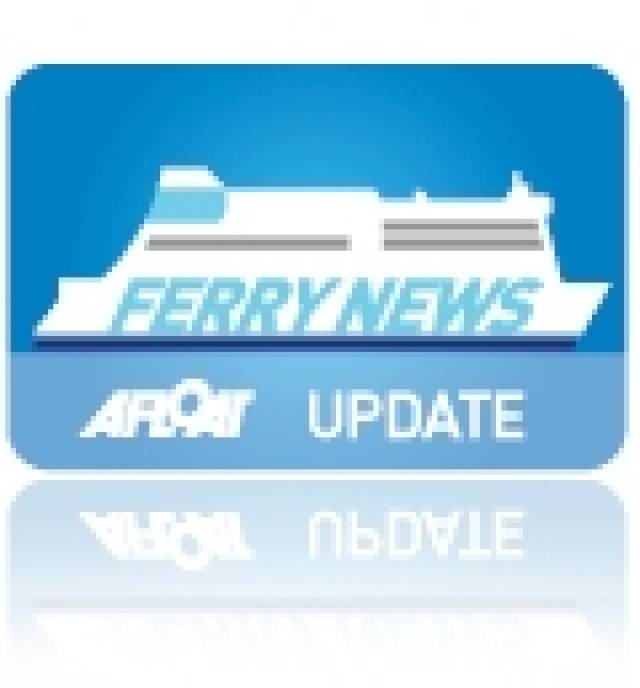#FerryExchange - Former Dublin Port-Holyhead ferry, Stena Nordica directly replaced by last month's much larger Stena Superfast X, is in France prior to entering a new career, writes Jehan Ashmore.
The 405 passenger ro-pax Stena Nordica as previously reported on Afloat.ie spent a stint serving out of Belfast after the introduction on the Dublin route by the 1,200 passenger Stena Superfast X. The newcomer entered service on the night of March 9th alongside Stena Adventurer.
This saw the withdrawn 'Nordica' cover Belfast-Cairnryan route serving sisters Stena Superfast VII and VIII. The pair formed part of a Stena six-ship refit totalling £6m at Harland & Wolff.
Following North Channel duties, Nordica set off for the Damen Arno Dunkerque, where the 24,206 tonnes vessel is having work required for her Stena charter to DFDS Seaways. It is understood she has been renamed Malo Seaways.
Currently moored alongside the facilities Quai de Douvres, the name is a giveaway as to her pending role as previously reported on Afloat.ie, she is to be deployed on the Danish company's Dover-Calais service.
When Malo Seaways enters the premier short-sea UK-France route, her debut will be somewhat full-circle given that Stena Superfast X, the former Dieppe Seaways was also chartered from Stena to serve this same Strait of Dover route.
The Arno yard in Dunkerque Est neighbours that of Dunkerque Ost, where the ferry company also operate a service to Dover.
The French North Sea port is also where Dieppe Seaways stood down and went to layup before she headed to a Polish yard for Stena Line in preparation of her Irish Sea debut.
When Malo Seaways enters service she will provide much needed additional capacity to provide DFDS Seaways with a two-ship service, where Calais Seaways is presently running.






























































